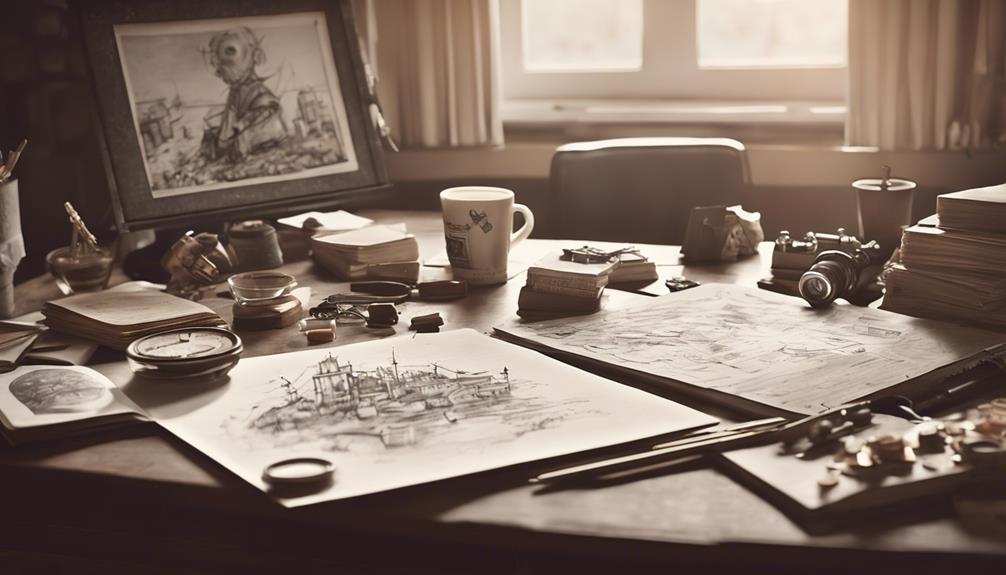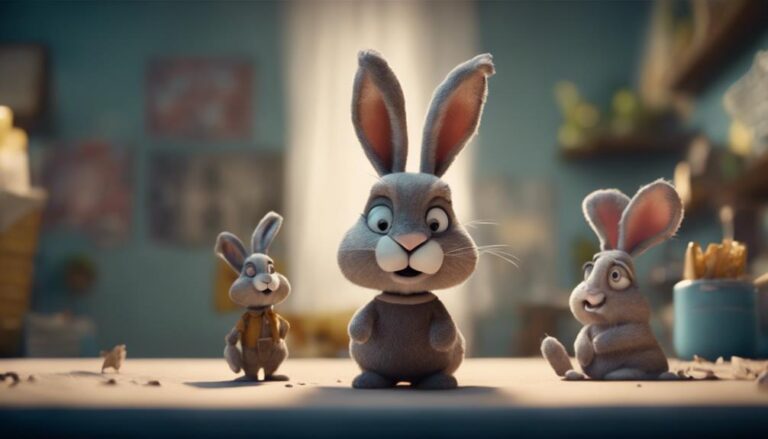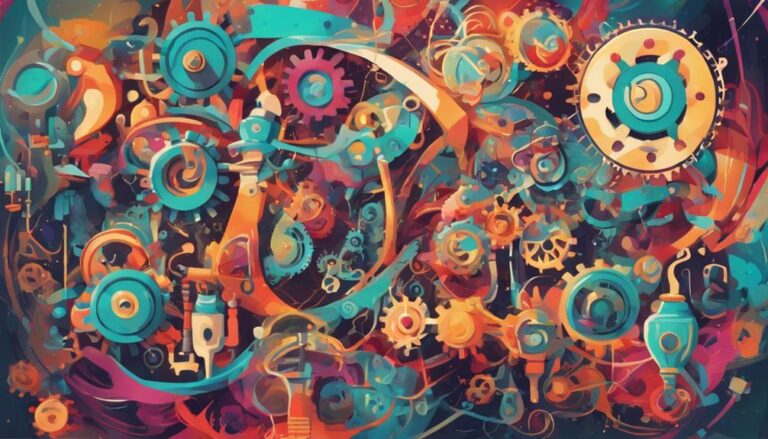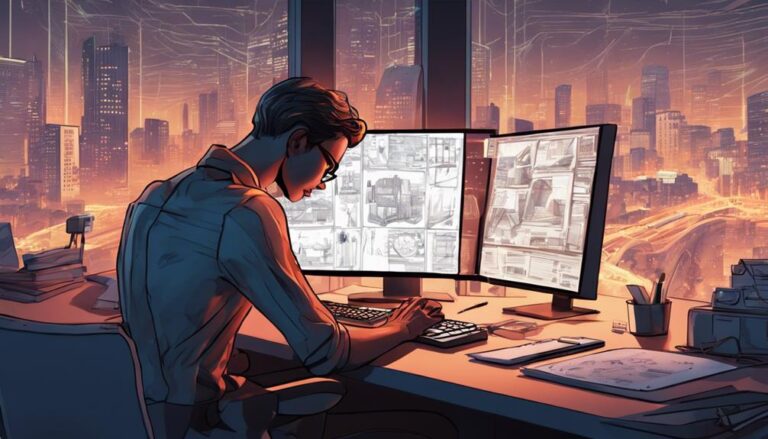5 Best Classic Animation Drawing Techniques to Learn
You can master the fundamental principles of classic animation by learning five essential techniques that have been used to bring beloved characters to life. Squash and stretch allows you to manipulate an object's volume and shape to create a sense of weight and movement. Anticipation and staging helps you plan character movement and placement for a clear visual narrative. Follow through and overlapping captures secondary motion and creates fluidity, while straight ahead action and pose creates dynamic energy and control. Finally, secondary action and character adds depth and visual interest to your animation. By grasping these techniques, you'll decipher the secrets of classic animation and take your skills to the next level.
Key Takeaways
- Mastering squash and stretch principles enables conveyance of emotions, energy, and physicality in animation.
- Anticipation techniques, like subtle movements and posture changes, create a sense of tension or expectation in the audience.
- Follow-through and overlapping techniques imbue animation with realism and fluidity by capturing secondary motion and simultaneous body part movement.
- Straight ahead action and pose create a sense of dynamic energy and control in character movements, with action timing impacting the overall feel.
Squash and Stretch Animation Basics
You'll start by mastering the fundamentals of squash and stretch animation, a crucial aspect of classic animation that involves manipulating an object's volume and shape to create a sense of weight, flexibility, and movement.
This technique allows you to create exaggerated movements that bring your characters to life. By applying squash and stretch principles, you'll be able to convey emotions, energy, and physicality in your animations.
To achieve fluid dynamics, you'll need to understand how to control the elasticity and volume of your objects.
This involves creating a sense of resistance and tension, which can be achieved by exaggerating the stretching and squashing of your characters' bodies.
For example, when a character jumps, you can stretch their body to convey the upward motion, and then squash it as they land to create a sense of impact.
Anticipation and Staging Essentials
As you manipulate the volume and shape of your objects to create a sense of weight and movement, you'll need to prepare your audience for the action that's about to unfold by mastering anticipation and staging techniques.
Anticipation is the setup for an action, creating a sense of tension or expectation in your audience. This can be achieved through subtle movements, changes in posture, or even a slight shift in the character's gaze.
Staging, on the other hand, involves planning the movement and placement of characters within a scene to create a clear and engaging visual narrative.
Effective motion planning is vital in staging, as it helps guide the viewer's attention and creates a sense of flow.
Scene choreography is also essential, as it guarantees that characters interact with each other and their environment in a believable and visually appealing way.
Follow Through and Overlapping
In every action, a subtle residual motion lingers, and mastering follow-through and overlapping techniques enables you to convincingly convey this phenomenon, imbuing your animation with a sense of realism and fluidity.
When you learn to capture the lingering motion, your characters' movements become more believable and engaging. Follow-through refers to the secondary motion that occurs after the main action, such as the swing of a character's arm after they've thrown a ball. Overlapping action involves the simultaneous movement of multiple body parts, creating a sense of fluidity and continuity.
To incorporate these techniques into your animation, focus on the importance of gesture. A character's gesture can convey their emotions and intentions, and mastering follow-through and overlapping allows you to accentuate these gestures.
For instance, when a character waves goodbye, their arm doesn't suddenly freeze; instead, it follows through with a natural, relaxed motion. By incorporating these subtle details, you can create a more immersive and engaging animation that draws the viewer in.
Straight Ahead Action and Pose
By mastering the subtleties of follow-through and overlapping, you've laid the groundwork for tackling more complex animation techniques, including straight ahead action and pose, which allow you to create a sense of dynamic energy and control in your characters' movements.
This technique involves drawing each pose or action in a sequence, focusing on the overall movement and flow of the animation.
To get the most out of straight ahead action and pose, consider the following key elements:
Action timing: The duration and pacing of each action or pose can greatly impact the overall feel of your animation. Experiment with varying timing to create a sense of tension or relaxation.
Body language: Use pose and movement to convey your character's emotions and personality. A slumped posture can indicate sadness, while a bold stride can convey confidence.
Weight and balance: Confirm your characters' movements feel grounded and realistic by considering their weight and balance in each pose.
Motion arcs: Use smooth, flowing motion arcs to create a sense of fluidity and energy in your animation.
Contrast and variation: Mix up the pace, tone, and style of your animation to keep the viewer engaged and interested.
Secondary Action and Character
You'll add depth and visual interest to your animation by incorporating secondary actions and characters that support the main action and story. These secondary elements can include gestures, facial expressions, and body language that reveal a character's personality, emotions, and intentions. By incorporating these details, you'll create a more engaging and believable animation that holds the viewer's attention.
When drawing secondary actions, consider how they relate to the main action and story. For example, if your main character is walking, their secondary action might be looking around or adjusting their hat. These small details can add texture and nuance to your animation, making it feel more realistic and immersive.
Remember to keep your secondary actions subtle and understated, as they should support the main action without overpowering it. You can also use secondary characters to add context and depth to your scene. By incorporating these techniques into your animation, you'll create a rich and engaging world that draws the viewer in and keeps them invested in the story.
Frequently Asked Questions
Can I Use Digital Tools to Achieve Classic Animation Looks?
You can achieve classic animation looks using digital tools by incorporating a hybrid approach into your digital workflow, combining traditional techniques with software like Toon Boom Harmony or Adobe Animate to mimic hand-drawn styles.
How Do I Create Smooth Motion Without Animating Every Frame?
To create smooth motion without animating every frame, you'll use frame skipping and onion skinning techniques. By skipping certain frames and layering your drawings, you'll achieve fluid movement while reducing the number of frames needed.
What's the Best Way to Practice Animation Without a Tutor?
You set a consistent practice schedule, dedicating specific times to animation exercises, and self-motivate by setting achievable goals, tracking progress, and rewarding yourself when milestones are reached.
Can I Apply These Techniques to 3D Computer-Generated Imagery?
You can adapt classic techniques to 3D CGI by leveraging cross-platform adaptation and hybrid workflows, allowing you to seamlessly integrate traditional skills with modern software, enhancing your 3D animation capabilities.
Are These Techniques Still Relevant in Modern Animation Industry?
You'll find that, despite industry evolution, timeless storytelling remains key to riveting audiences; classic techniques still resonate, as they focus on emotional connection, making them highly relevant in modern animation, even when combined with CGI.
Conclusion
Mastering these 5 classic animation drawing techniques will elevate your skills and bring your characters to life.
You've learned the basics of Squash and Stretch, Anticipation and Staging, Follow Through and Overlapping, Straight Ahead Action and Pose, and Secondary Action and Character.
Now, practice and experiment with these techniques to develop your unique style and storytelling voice.
As you continue to hone your craft, remember to stay flexible and adapt to the ever-changing demands of the animation industry.






